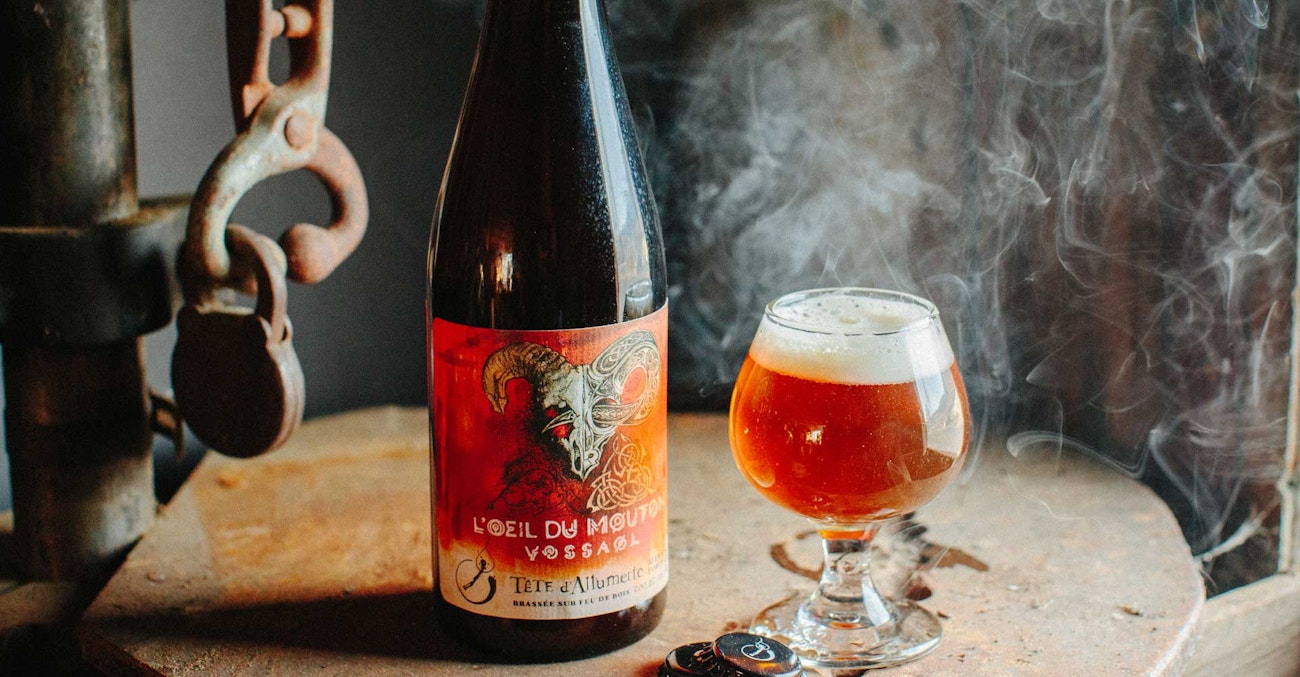It all started when I went to an event in 2015 at the Griendel brewery in Quebec City, shortly before the Microbrewers Association of Quebec conference. The writer Martin Thibault—who has since become a good friend and contributor of brewing ideas—gave a talk following his trip to Norway. He spoke a lot about stjørdalsøl and vossaøl. They immediately appealed to me because I’m probably the only brewer in Canada to have the kit to make this type of beer, boiled for a long time over a wood fire. (In fact, we brew all our beers over a wood fire.)
After the conference, I went to ask Martin if he would like to brew this beer with me, to guide me in the technique, to reproduce a typical vossaøl as faithfully as possible. I wanted it to taste like it does in Voss.
The name of the beer, incidentally, comes from an experience that Martin had in Norway. He was at the only place there that serves vossaøl to the public—but they’re not allowed to sell it, so they include it with a meal. So, he and several brewers each dined on half a cooked sheep’s head. As the guest of honor, Martin was the first to eat the sheep’s eye under the admiring gaze of the others, before they could eat their own meals.
Brewing L’Oeil du Mouton
We use a rustic, pale pilsner malt for 100 percent of the grist. All of the water we use to make the beer is from a juniper infusion. The day before we brew, we pick the branches in the woods near the brewery, taking care to pick the male branches only—no berries—and picking the younger shoots, only the tender green ones. According to tradition, these beers are brewed in the fall, just after the plants have cooled down, which concentrates their aromas.
So, there are no juniper branches in the mash itself—it’s really a mega-herbal tea of 2,500 liters (660 U.S. gallons, or 21 barrels), which is infused for two hours just before brewing and used throughout the process.

L’Oeil du Mouton from Microbrasserie Tête D'Allumette was most likely the first heimabrygg brewed in the Western Hemisphere.
We boil for five hours over a wood fire to concentrate the sugars and caramelize the aromas. Hops are not the star at all when brewing vossaøl; there are very few (about 5 IBUs). Mainly, they balance the sugary side of beer, to give it a shy little bitterness. We add a portion of hops to the mash, then a small dose at the start of the boil. The beer’s bitterness is minimal, and it comes partly from the juniper branches, which impart resinous, woody fir notes.
We also use our local water in its natural state for this beer, and with 800 ppm of total dissolved solids, it adds some interesting mineral notes.
Fermentation
We use the kveik that Martin brought back from Norway—the same kveik he gave me in a tiny 0.5 milliliter vial for the first batch back in 2016. This is the same Voss culture (from the Gjernes farm) collected by Lars Marius Garshol.
Over the years, I’ve done several tests with the kveik. It gives similar results in terms of performance and ester expression regardless of the fermentation temperature. I inoculate it at 24°C (75°F) and let it rise to 33°C (91°C). It reaches final gravity in about five days at these temperatures, but we then let it mature for three weeks before conditioning.

